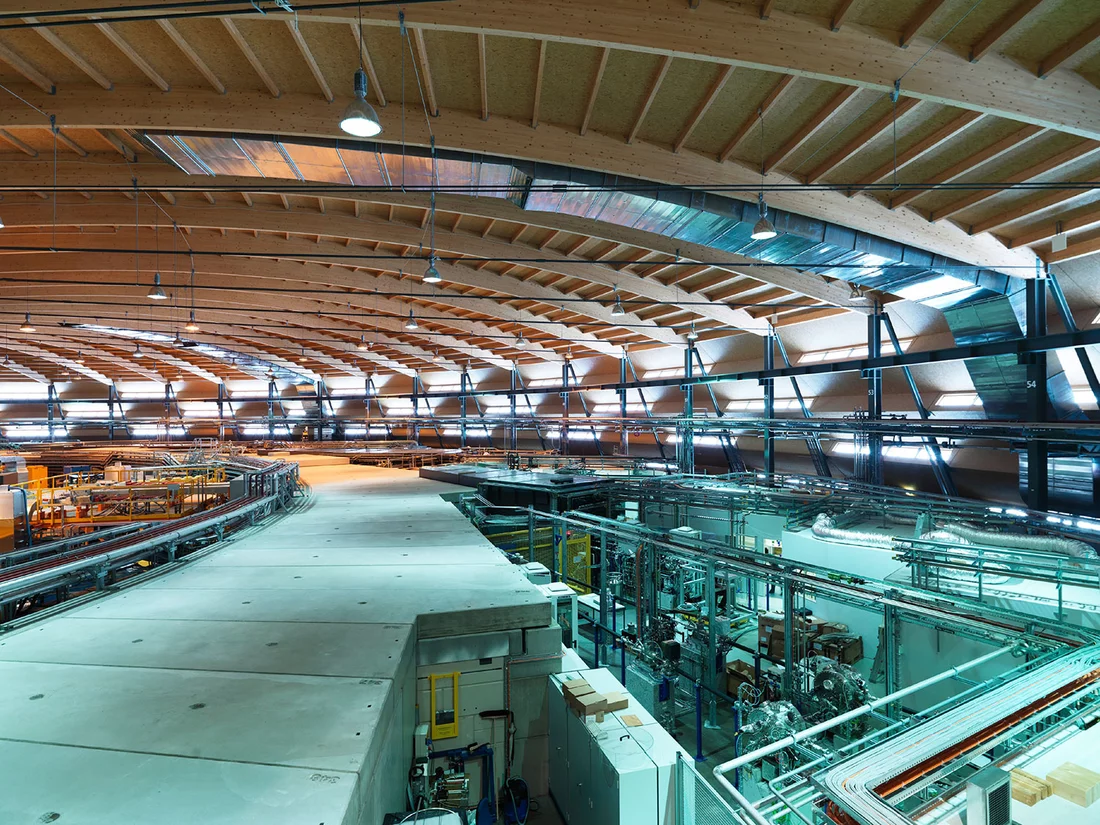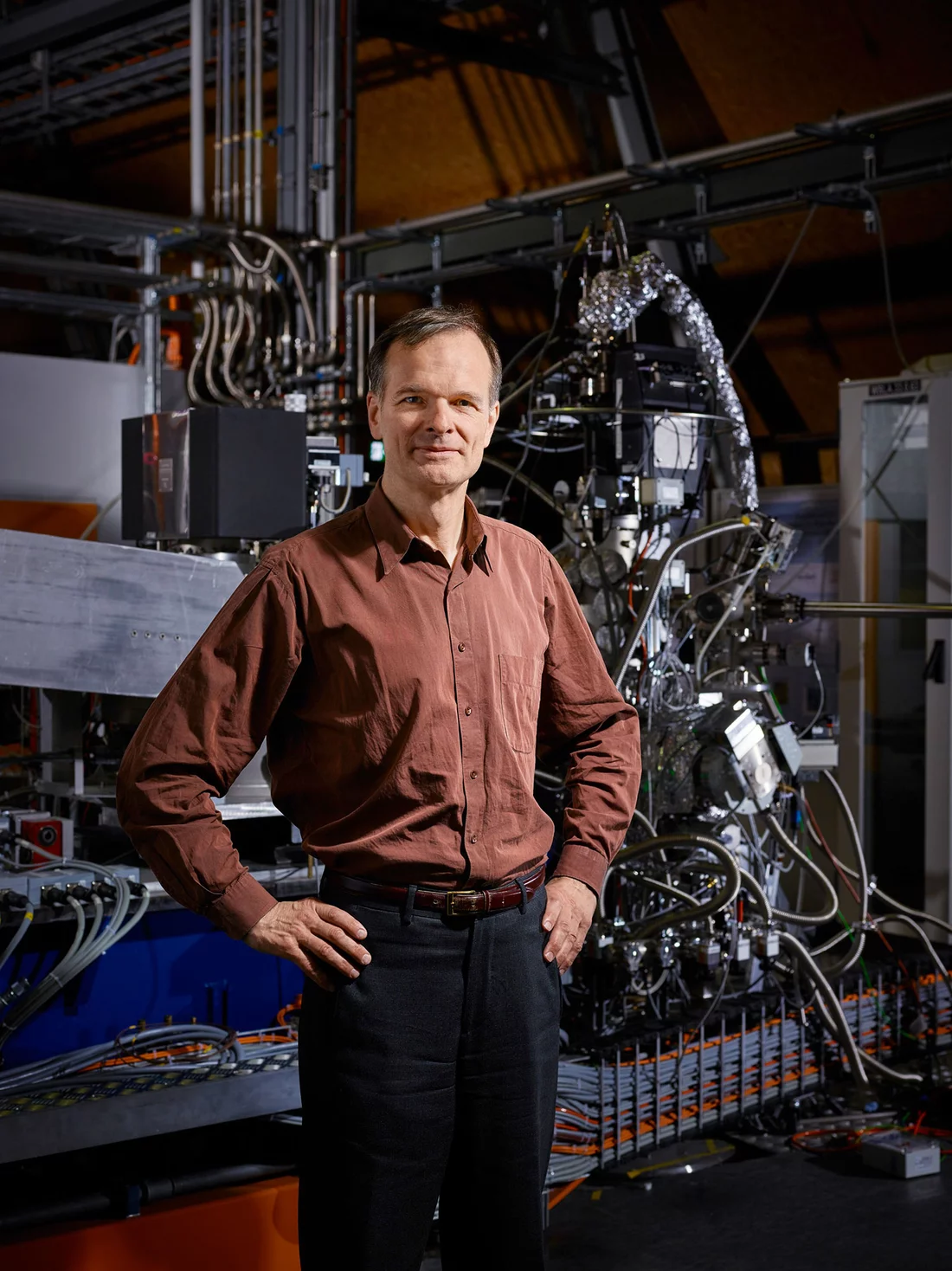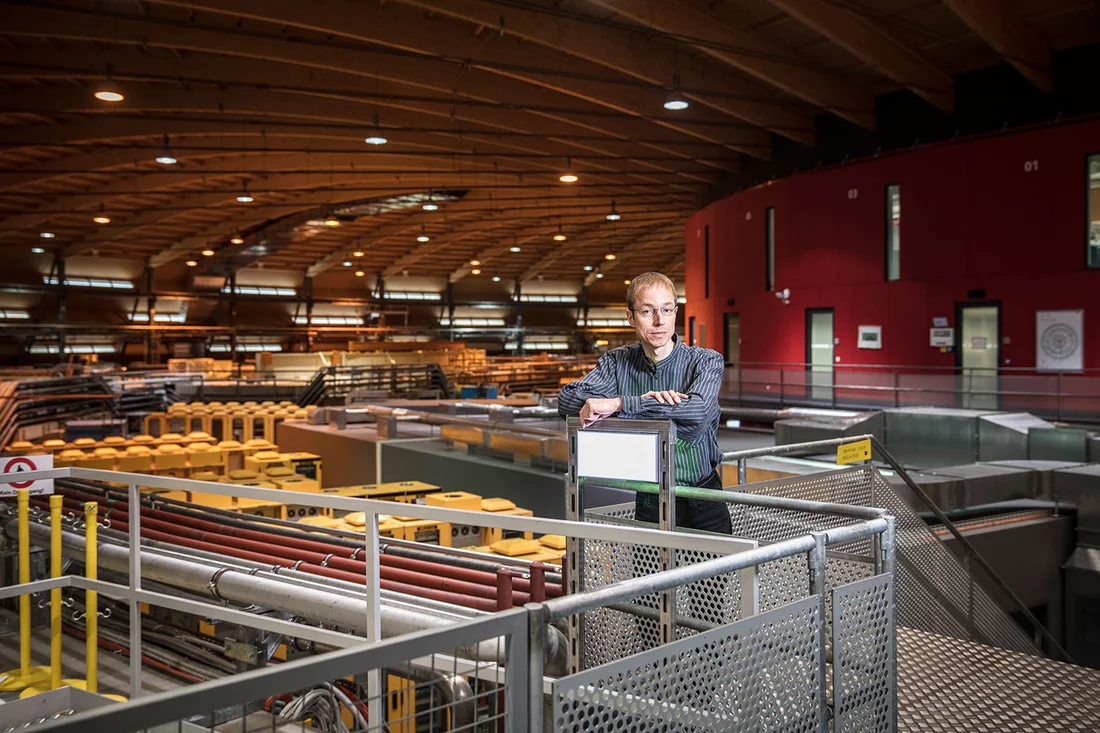For the International Day of Light: How PSI scientists study molecules and materials
The 16th of May is the International Day of Light. With the help of light, researchers at the Paul Scherrer Institute PSI see how molecules assemble and how rapid chemical and physical processes occur on the scale of individual atoms. Their findings enable advances in biology and pharmacology and also promote the development of new materials for data storage and medical technologies, such as better early diagnosis of breast cancer.
It was the 16th of May, 1960, when an experiment by the American engineer Theodore Maiman brought forth the first laser light. For that reason UNESCO has now chosen 16 May as the date for the new International Day of Light. The new large-scale research facility SwissFEL at PSI produces laser light of a quite special kind in its 740-metre-long building: extremely short and intense flashes of X-rays. With this machine, molecules and atoms can practically be filmed in action. Switzerland is the first small country to operate such a facility
, says Gabriel Aeppli, head of the Photon Science Division at PSI. Worldwide, there are only five of these so-called free-electron X-ray lasers. Since the end of 2017, the first pilot experiments have been running at SwissFEL. Aeppli's initial assessment: The start-up of SwissFEL is progressing brilliantly.
In building SwissFEL, PSI leaned on its experiences with its older large-scale research facility that generates less bright but nonetheless intense X-ray light: The Swiss Light Source, SLS for short, is housed in a circular building reminiscent of a big flying saucer. Internationally, SLS is in fact only a medium-sized research facility, yet our science is world-class
, says Oliver Bunk, head of the Laboratory for Macromolecules and Bioimaging at PSI. One of the largest and most important biomolecules under investigation here is the ribosome. It has a critical function in the cells of all living things: It translates the genetic information of the DNA so that the cell produces the appropriate proteins. For deciphering the ribosome structure, Venkatraman Ramakrishnan, together with two other researchers, received the Nobel Prize for Chemistry. The scientist carried out one part of his experiments at the synchrotron at PSI.
Targeted development of new drugs
Especially important is the study of protein molecules that are vital for life. You can think of proteins as little machines that take part in all of the processes in the human body
, explains Oliver Bunk. To understand the function of these machines, you need to know their structure. Malfunctions of proteins are often associated with diseases. The pharma industry then searches for a small drug molecule that docks on the protein and in this way blocks the malfunction, so that the person can recover
, Bunk says. For that reason, the Swiss pharmaceutical industry supports experiment stations at SLS.
At SLS we do primarily fundamental research
, says PSI physicist Bunk. But the results also contribute to valuable applications, which can be completely surprising.
One example of that is a new method for early diagnosis of breast cancer. PSI researchers, working in the area of imaging, actually wanted to better characterise the X-ray light of SLS. For that, they developed a method that measures not only how strongly a material absorbs, but also how it deflects and scatters X-rays. With this method, soft tissues could be made much more visible than with conventional X-ray techniques, which show mainly bones. Therefore malignancies in tissues can be identified earlier and more accurately.
In a second step, the new measurement method was developed further so that it can function not only at a synchrotron, but also with the conventional X-ray tubes at hospitals. By now, we have a pilot project on mammography in the Canton Hospital Baden and at the University Hospital Zurich
, says Oliver Bunk. In addition, researchers at PSI and ETH Zurich founded a spin-off company in 2017 to build a novel 3-D mammography system based on this method. The firm, called GratXray, headquartered in the Switzerland Innovation Park close to PSI, won the Swiss Technology Award in the year it was founded.
Investments pay off
GratXray is one of several PSI spin-offs to come out of research with light. Another particularly nice success story is the company DECTRIS
, Oliver Bunk says. This start-up in Baden-Dättwil, founded in 2006, manufactures X-ray detectors and employs more than 100 people. Originally, PSI had built a detector for the particle physics laboratory CERN that played a role in the confirmation of the Higgs boson. On that basis, the PSI physicists developed special detectors for SLS, which are now sold by DECTRIS to research institutions worldwide. The company is the market leader in the manufacture of these devices for synchrotron facilities. The investments in SLS have paid off for our country
, says Gabriel Aeppli. We expect the same for the X-ray laser SwissFEL.
This new facility generates X-ray light pulses that are a billion times as bright as the light of SLS. The X-ray flashes are so short that they can be used to image extremely fast processes. Thus, for example, the chemical reactions that trigger vision in the eye or energy transport in a solar cell may be rendered visible. In a first experiment, the researchers investigated how a metal alloy changes its structure when it is irradiated with laser light. Because these structural transformations also change the electrical properties of the material, such alloys could prove suitable for the production of especially efficient data storage devices.
But also in cancer research, new insights can be expected. We are especially excited about experiments that will show the time-dependent effects of chemotherapies on the molecular level
, says Gabriel Aeppli. Such findings could contribute significantly to the development of personalised cancer treatments.
Text: Barbara Vonarburg
About PSI
The Paul Scherrer Institute PSI develops, builds and operates large, complex research facilities and makes them available to the national and international research community. The institute's own key research priorities are in the fields of matter and materials, energy and environment and human health. PSI is committed to the training of future generations. Therefore about one quarter of our staff are post-docs, post-graduates or apprentices. Altogether PSI employs 2100 people, thus being the largest research institute in Switzerland. The annual budget amounts to approximately CHF 380 million. PSI is part of the ETH Domain, with the other members being the two Swiss Federal Institutes of Technology, ETH Zurich and EPFL Lausanne, as well as Eawag (Swiss Federal Institute of Aquatic Science and Technology), Empa (Swiss Federal Laboratories for Materials Science and Technology) and WSL (Swiss Federal Institute for Forest, Snow and Landscape Research).
(Last updated in May 2017)
Additional information
https://www.lightday.org/ – Information on the International Day of Light
Contact
Prof. Dr. Gabriel Aeppli
Head of the Photon Science Division
Paul Scherrer Institute, 5232 Villigen PSI, Switzerland
Telephone: +41 56 310 42 32
E-mail: gabriel.aeppli@psi.ch [German, English]
Dr. Oliver Bunk
Head of the Laboratory for Macromolecules and Bioimaging
Paul Scherrer Institute, 5232 Villigen PSI, Switzerland
Telephone: +41 56 310 30 77
E-mail: oliver.bunk@psi.ch [German, English]




